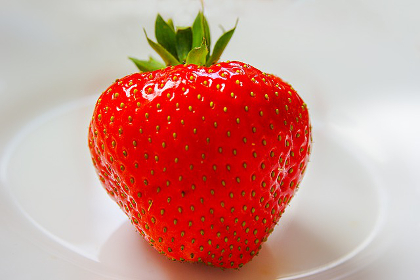
List of Most Pesticide-Contaminated Fruits and Vegetables
If you eat strawberries in your morning smoothie or as a quick snack, make sure they're organic. In an Environmental Working Group (EWG) analysis of 48 fruits and vegetables, strawberries earned the dubious moniker of most contaminated with pesticide residues.1
April 27, 2016 | Source: Mercola.com | by Dr. Joseph Mercola
If you eat strawberries in your morning smoothie or as a quick snack, make sure they’re organic. In an Environmental Working Group (EWG) analysis of 48 fruits and vegetables, strawberries earned the dubious moniker of most contaminated with pesticide residues.1
They beat out apples (last year’s top offender) and were found to be almost universally contaminated — 98 percent of samples contained at least one detectable pesticide residue.
It probably comes as no surprise that conventionally grown produce may be contaminated with pesticides, but there are wide variances in the levels of different crops.
Since most people tend to pick and choose which fruits and vegetables to buy organic, knowing which items are most contaminated helps you to prioritize which foods to buy organic and which are safe to purchase conventionally grown.
Eating Strawberries Could Expose You to Dozens of Pesticides
Strawberries are one of the most popular fruits in the U.S. The average American eats close to 8 pounds a year, “and with them, dozens of pesticides, including chemicals that have been linked to cancer and reproductive damage or are banned in Europe,” EWG’s Bill Walker and Sonya Lunder said in a statement.2
EWG used data from the U.S. Department of Agriculture (USDA), which found strawberries tested in both 2009 and 2014 contained nearly six different pesticides per sample compared to under two per sample for all other produce.3
According to California data, nearly 300 pounds of pesticides were applied to each acre of strawberries grown in the state in 2014. Compare this to corn, which is doused with about 5 pounds of pesticides per acre — and is considered to be a pesticide-intensive crop.
Hormone-Disrupting, Potentially Cancer-Causing Pesticides Used on Strawberries
What types of pesticides are used on strawberries? According to EWG:4
- Carbendazim, a hormone-disrupting fungicide that’s banned in the European Union
- Bifenthrin, an insecticide designated a possible human carcinogen by California regulators
- Malathion, a nervous system toxin that the International Agency for Cancer Research also classifies as a probable human carcinogen
The EWG analysis revealed that 40 percent of strawberries tested had residues of 10 or more pesticides (one sample even had 17 different pesticide residues).
It’s also known that some strawberry growers use 60 different pesticides on their fields. Whenever possible, choose organic strawberries or, even better, grow your own.
Strawberries are easy to grow and, as a bonus, they’re perennials and will come back each year in most climates. Plus, when you grow your own you get the satisfaction of harvesting your very own seasonal summer treat. As EWG noted, strawberries have only relatively recently become available year-round:5
“Fresh strawberries once were a seasonal treat, available in limited supply only for a few spring and summer months.
In recent decades the increased use of pesticides and other chemically-aided growing methods have made cheap strawberries available year round, and aggressive marketing campaigns have spurred consumption.”
